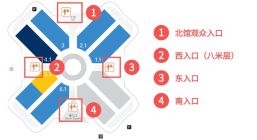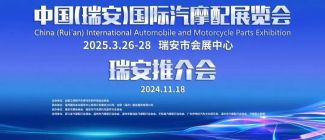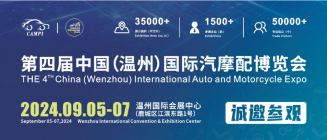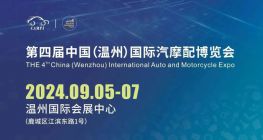JD Auction will officially launch the Xiaomi SU7 Ultra in stock auction at 10:00 am on March 27th, with a starting price of only 1 yuan. In fact, the market price of Xiaomi SU7 Ultra starts at 529900 yuan
It is highly likely that Lei Jun has dropped another bombshell in the field of new retail. You should know that after the release of the new Xiaomi SU7 Ultra, due to production capacity limitations, there was a phenomenon of price increases in the second-hand car market, with some second-hand cars priced at 650000 yuan. Do these phenomenal products still need to be separately auctioned off?
So there is only one answer. On the surface, this appears to be a marketing event, but in essence, it is a brand new attempt in the field of new retail.Joining forces with popular models such as Xiaomi SU7 Ultra on high traffic platforms like JD.com. This approach of using "symbolic low price+transparent bidding" has created highly topical events in the face of huge price contrasts. This marketing method can quickly attract a large number of users' attention, form hot topics, and spread widely on social media.
If this demonstration is successful, other car companies may also follow suit and use the platform's public domain traffic to attract potential consumers to participate in online auction activities. At the same time, by combining the brand's own private domain traffic for conversion, users who are interested in auction activities will be transformed into actual car buyers.
01
New retail breakthrough?
Previously, many car companies have actively explored new retail models on e-commerce platforms, attempting to leverage the traffic advantages and technological means of e-commerce platforms to open up new paths for car sales. However, most of these attempts have failed to achieve the desired results.
Some car companies have opened official flagship stores on e-commerce platforms and launched online car purchase services, but consumers often only use the online platform as a place to receive "discounts". When they actually place an order to buy a car, they still prefer offline physical stores, fearing that online car purchases may have problems such as insufficient after-sales support and cumbersome pick-up processes.
In addition, some car companies have not fully integrated the characteristics of e-commerce platforms and user needs in the process of new retail, simply moving offline sales models to online, lacking innovation and differentiation, making it difficult to stand out in the fierce market competition. These unsuccessful trial runs have also made car companies more cautious on the road to new retail.Of course, driven by the digital wave, many e-commerce platforms are also trying to empower car companies in order to drive more traffic. But more often than not, e-commerce platforms find it difficult to serve as traffic entry points to bring sales opportunities to car companies. Instead, it is only through various promotional activities such as limited time discounts, car purchase subsidies, etc. that we can attract consumers' attention.
It can be seen that the goals of both car companies and e-commerce platforms have not been achieved.
Now that JD.com has launched the Xiaomi SU7 Ultra car auction event, it is accompanied by a major upgrade to the "JD Auction" channel. The original "Auction Leak" channel has been officially renamed as "JD Auction" as a first level channel on the homepage of the JD App. It marks the transition of e-commerce platforms from traditional "auxiliary sales" to "core channels" and their direct involvement in key aspects of automobile transactions.
Taking the Xiaomi SU7 Ultra's "1 yuan minimum auction" as an example, this innovative auction model not only breaks down traditional pricing barriers, but also increases the fun and attractiveness of transactions, making car prices more market-oriented and transparent, giving consumers the opportunity to purchase their desired vehicles at a more affordable price.
More importantly, this "starting price of 1 yuan" model may be more effective than the current "fixed price" model.
The "starting price of 1 yuan" creates a strong price anchor point through extreme low prices, causing consumers to subconsciously compare subsequent bids with the initial anchor price and develop a "bargain hunting" mentality. For example, the market price of Xiaomi SU7 Ultra is 529900 yuan, and the starting price of 1 yuan implies a "potential low price possibility". Even if the final transaction price is close to the market price, users will still strengthen their understanding of the brand's cost-effectiveness due to their sense of participation.In contrast, the "fixed price" model lacks the stimulation brought by price fluctuations, and user decisions are more based on static parameter comparisons, making it difficult to stimulate the purchasing impulse of non rigid demanders. This model relies on car companies to pre price and bear the risk of unsold or profit loss caused by pricing errors.
That is to say, the "starting price of 1 yuan" essentially transfers some pricing power to consumers, forming a co creation relationship of "user participation in pricing". In the "fixed price" model, users are only passive recipients of prices and lack depth of interaction. This difference is particularly evident among young consumer groups, who are more inclined to pay for transactions that have a story.
Of course, for car companies, previously unsold models, exhibition cars, or test drive cars often require significant discounts and long digestion cycles through promotions. The auction mode creates scarcity through time limited bidding, and bidders may push the transaction price close to or even higher than expected due to game psychology, significantly improving the efficiency of capital recovery for car companies.
From a larger narrative perspective, in the trend of automobile consumption shifting from "functional purchase" to "experiential consumption", the dynamic interaction mode represented by "1 yuan minimum auction" is more in line with future business logic than the one-way output of "fixed price". Its core value lies not in the transaction price itself, but in restructuring the relationship between car companies, users, and the market.
02
Not applicable to everyone
In today's fiercely competitive automotive market, the dimensions of competition among car companies are undergoing profound changes. Dynamic pricing and user co creation are gradually emerging as new tools for car companies to enhance competitiveness and seize market share.
User engagement is a major highlight of the Xiaomi SU7 Ultra auction event. In the traditional car buying model, consumers are often in a passive position of accepting prices, lacking a sense of participation and discourse power. The auction mechanism gives consumers the "pricing power", allowing them to bid according to their own wishes and budget.This bidding process not only increases the fun of buying a car, but more importantly, strengthens the interaction stickiness between the brand and users. Consumers will develop a stronger sense of identification and belonging to the brand during the auction process, thereby increasing brand loyalty. For car companies, cultivating a sense of user engagement is the key to establishing long-term stable customer relationships.
This change in gameplay is an important step forward in the field of new retail. It will have a profound impact on car companies and dealers, forcing them to carry out a series of reforms. In terms of channel transformation, car companies and dealers can no longer rely solely on traditional 4S stores and direct stores, but need to actively cooperate with e-commerce platforms to jointly build a closed-loop ecosystem of "traffic".
E-commerce platforms have huge user traffic and powerful data analysis capabilities, which can help car companies and dealers more accurately reach potential customers. The auction mechanism provides strong support for car companies and dealers to accelerate inventory turnover. Whether it is new cars, unsold models, exhibition cars and other inventory vehicles, buyers can be quickly found through auctions.
Of course, although the marketing strategy of "starting at 1 yuan" can quickly attract attention and gather traffic in the short term, it is not a universal marketing tool. If car companies overly rely on or abuse this method, it is highly likely to bring a series of negative effects. From the perspective of consumers, excessive use of the "one yuan minimum price" may lead to confusion in their understanding of the brand's pricing system. Consumers may develop a misconception that all models of the brand can be negotiated at will, leading to doubts about normal pricing in daily car purchases and affecting the brand's price credibility and market stability.
Therefore, when using the marketing strategy of "one yuan minimum auction", car companies must clearly define the boundaries of the auction scenario. It can be limited to specific car models, such as limited editions, inventory backlog models, etc., to avoid using this method for all car models. At the same time, car companies also need to strengthen the cognitive education of "auction price ≠ market price", so that consumers understand that auction is only a special marketing method, and its price cannot represent the normal market price of the vehicle.
If the auction price far exceeds the user's psychological expectations, such as the Xiaomi SU7 Ultra selling for 800000 yuan, it may be questioned as "hype marketing"; If the transaction price is too low, such as only 300000 yuan, it will hurt the feelings of early original price car buyers and even trigger collective complaints. This price volatility essentially conflicts with the stability demand of cars as "durable consumer goods".
Therefore, although the "1 yuan minimum auction" model has some unique value, it is essentially a non-standard and highly volatile trading tool that should be used with caution and efficiency.
AMS2024 Exhibition Guide | Comprehensive Exhibition Guide, Don't Miss the Exciting Events Online and Offline
Notice on Holding the Rui'an Promotion Conference for the 2025 China (Rui'an) International Automobile and Motorcycle Parts Exhibition
On September 5th, we invite you to join us at the Wenzhou Auto Parts Exhibition on a journey to trace the origin of the Auto Parts City, as per the invitation from the purchaser!
Hot Booking | AAPEX 2024- Professional Exhibition Channel for Entering the North American Auto Parts Market
The wind is just right, Qianchuan Hui! Looking forward to working with you at the 2024 Wenzhou Auto Parts Exhibition and composing a new chapter!
Live up to Shaohua | Wenzhou Auto Parts Exhibition, these wonderful moments are worth remembering!
Free support line!
Email Support!
Working Days/Hours!





